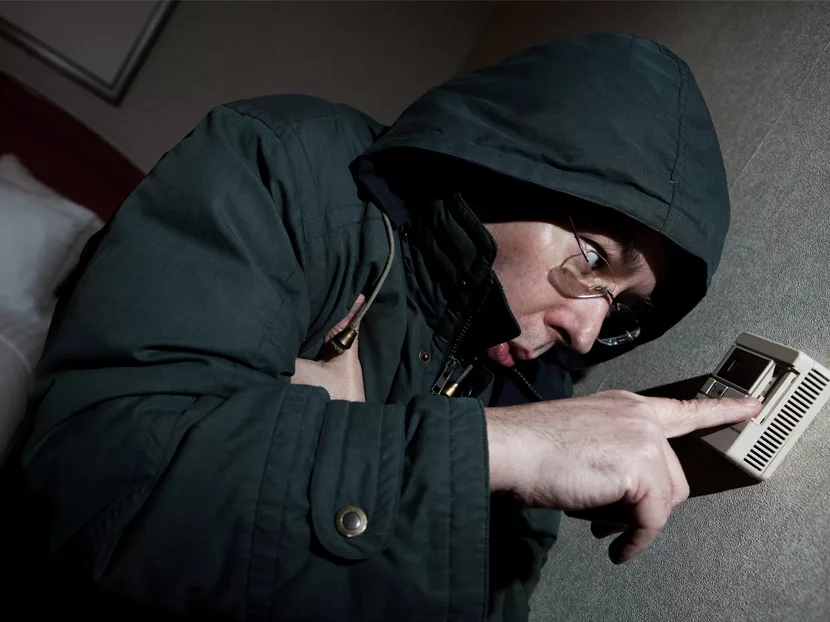Not long ago, my friend Sydney had a new heating system installed in her home. Sydney is a fussy person. She has been burned by a few contractors. I was surprised and delighted to learn the job went smoothly and she gave the company a five-star review on Yelp. Sydney recounted the details of the job to me, and I mentally clicked off all the things the heating company did right:
- Professional salesperson arrived on time.
- Thorough and appropriate diagnosis and system recommendations.
- Top-drawer pricing and high expectations.
- Clear contract and completed permits and paperwork.
- Timely installation by friendly, competent technicians.
- Walk-through with the salesperson and punch list completed.
- Swag-filled gift basket and a thank-you note.
- A few months later, the bottom fell out. Sydney called me to debrief after what sounded like a traumatic experience with the same company. She said, “Because you are in the home service business, I thought you would be interested in how this call went.”
I was. You might be, too. Even the best companies have some very bad moments. Brace yourself for a cringe-worthy tale.
Sydney woke up to a cold house on a very cold day. She called the heating company at 7:30 a.m., and they promised to send a service technician right over. This is what happened:
- The tech showed up at 6:30 p.m.
- He didn’t bring any tools with him when he came to the door.
- He asked Sydney if she wanted to tag along while he checked out the system. She said, “No. Let me know what you find.”
- He replied, “Your loss.” Then, went to the basement for 30 minutes.
- He came back upstairs and said, “I better get some tools.”
- He went back downstairs for 45 minutes. Then, back upstairs, he told Sydney, “I’ve got good news and bad news.”
Sydney recalled: “First of all … what is he doing down there? Anyway, I said, ‘Bad news first, I guess.’ He replied with, ‘The bad news is there is no bad news. I am not going to sell you anything.’ Then, he said something about a sensor that isn’t working and he doesn’t have one with him, but they are pretty easy to get if I will call the office and order one.
“Now, I think a sensor is important. Like, will we die of a gas leak or something if we don’t have a sensor? But why can’t he order the sensor? Next thing I knew, he was gone. He literally ‘ghosted’ me.”
You and I might assume the situation was not that bleak, but Sydney wouldn’t. She went right to a bad place. So, she called the company.
- A friendly customer service rep answered the phone.
- Sydney related that the tech who just left her house didn’t seem to know what he was doing.
- The CSR found Sydney’s service call on their system and identified Paul as the tech took the call.
- She told Sydney, “Oh, Paul has been with us for years. He’s really good. One of our better techs.”
- Sydney replied, “Well, he said something about a sensor and that I was supposed to order one.”
- The CSR said, “What kind of sensor do you want?”
- When Sydney said, “I don’t know,” the CSR suggested she call Paul.
- Ugh. Sydney ended up calling another service company and paid them to fix a part that seemed to be under warranty with the original company.
“I just couldn’t take the craziness anymore!” she told me.
A great definition of customer service is managing customers’ expectations.
There is good news and bad news. The bad news is that, right now, someone at your company may be blowing up a customer. They are failing at managing and meeting expectations. The good news is you can often fix a customer disaster and turn it into a customer recovery. Moving forward, you can develop a customer recovery process and prepare your team for the inevitable bumps on the road to great customer service.
In the above situation, Sydney’s expectation was high, based on her previous experience with the company. As the day progressed, her expectations were not met and her frustration increased. The road to recovery lies in the gap between the expectation and the perceived reality.
Customer recovery process
This is a brief overview of the steps involved in turning a tough customer service situation into something better.
1. Identify the upset. Did it get … weird? My friend Tom Rosendahl of Dakota Supply Group helps his team identify problems with this analogy: Imagine a light bulb between you and your customer. When all is well, the bulb will get brighter and warmer. It feels good. When you start to lose them, the bulb gets dimmer and cooler. It feels weird.
Sometimes you learn of the upset later on a follow-up call or a nasty review on Google.
2. Acknowledge the upset. “You don’t sound happy.” “I hear you. This is not going as expected.” “Is this what you had in mind when you called us?”
3. If needed, buy some time. “Let me explore the situation and get back to you in xx minutes.”
4. Investigate the situation and assemble options. “You needed help with a faulty furnace and we veered off track. I apologize. Here are some options for moving forward.” “What can we do to get back on track here?”
5. Work out next steps. It takes active listening and your best communication skills.
6. Do what you promised. Maybe a little bit more, if you’re certain you are on the right track.
7. Follow up. Send a thank-you gift, and perhaps an apology.
Playing offense and defense
Customer recovery is a defensive move. You are trying to make up lost ground. My partner and mentor Al Levi suggests, “Playing defense all the time is exhausting. If we improve our offense, we won’t burn out our team or our customers.”
With each customer recovery, perform a debrief with the involved team members. Consider what went wrong, how you fixed the problems and what you can do differently in the future. Often, this will lead to a humble apology and careful clarification. Most of the time, the debriefs result in new or improved procedures. That’s playing offense.
Consider delivering formal customer recovery training to your team. Devote a half-day to the class and review procedures based on the customer recovery process. Role-play situations from mild to wild (from tracking mud on the carpet to a customer-watchdog TV sting operation).
This training prepares team members for the inevitable mess up. Or, just as likely, someone is going to perceive you’ve messed up. For instance, Sydney was concerned when the tech didn’t bring any tools to the door. For some companies, that is standard operating procedure. Debriefing Sydney’s call, one might consider that letting the customer know the plan could avoid misunderstandings.
“Mrs. Fernwicky, I’d like to ask a few questions and check out the system. Then, I can determine which tools I may need.” Or you might decide to equip your techs with a small flashlight, screwdriver and meter for their initial diagnosis. These conversations can lead to outstanding customer service — expectations managed and exceeded!
This is a meaty topic and there is more to explore. Want to share your experiences? Or learn more about the customer recovery process training at Zoom Drain? Reach me at [email protected].






